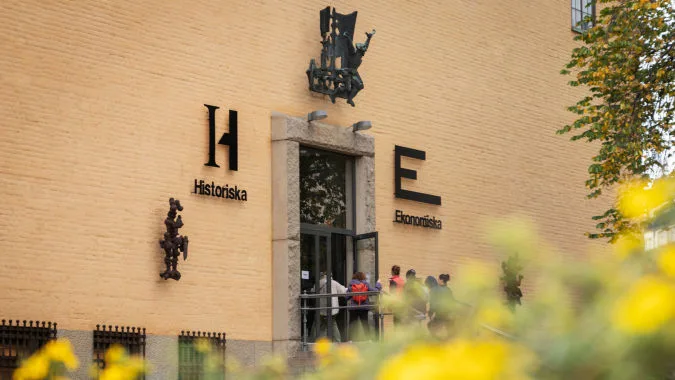See real Viking objects at the Swedish History Museum
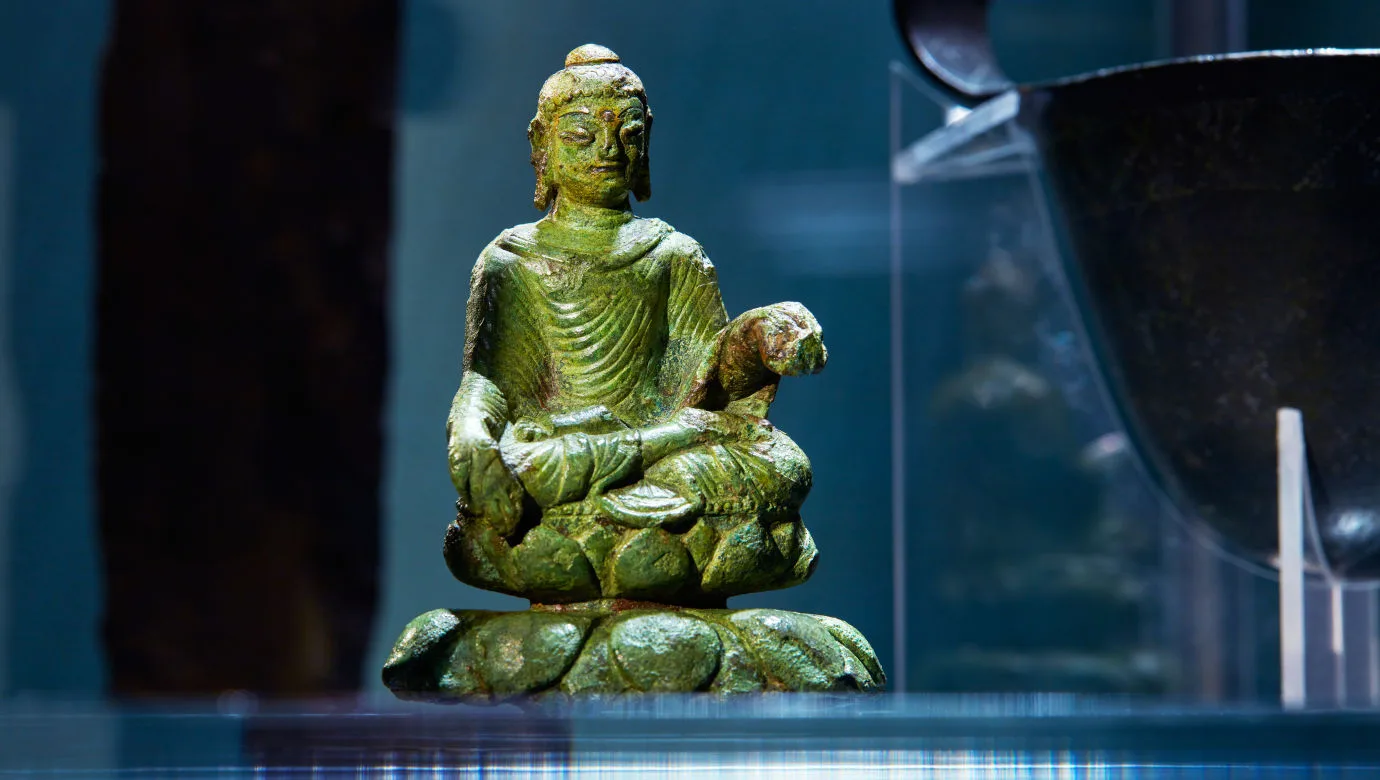
The Buddha from Helgö
Bronze Buddha figurine. The statuette was made in the late 5th or early 6th century, most likely in the Swat Valley, on the border of present-day Afghanistan and Pakistan. Sometime during the Vendel or Viking Age, it traveled to Helgö in Sweden and was discovered during an archaeological excavation in 1956. The Buddha sits on a throne shaped like a double lotus flower, and a third eye is depicted on the forehead.
Where to find it
On view at the Swedish History Museum in the exhibition The Viking World. You can find the object in case 07.
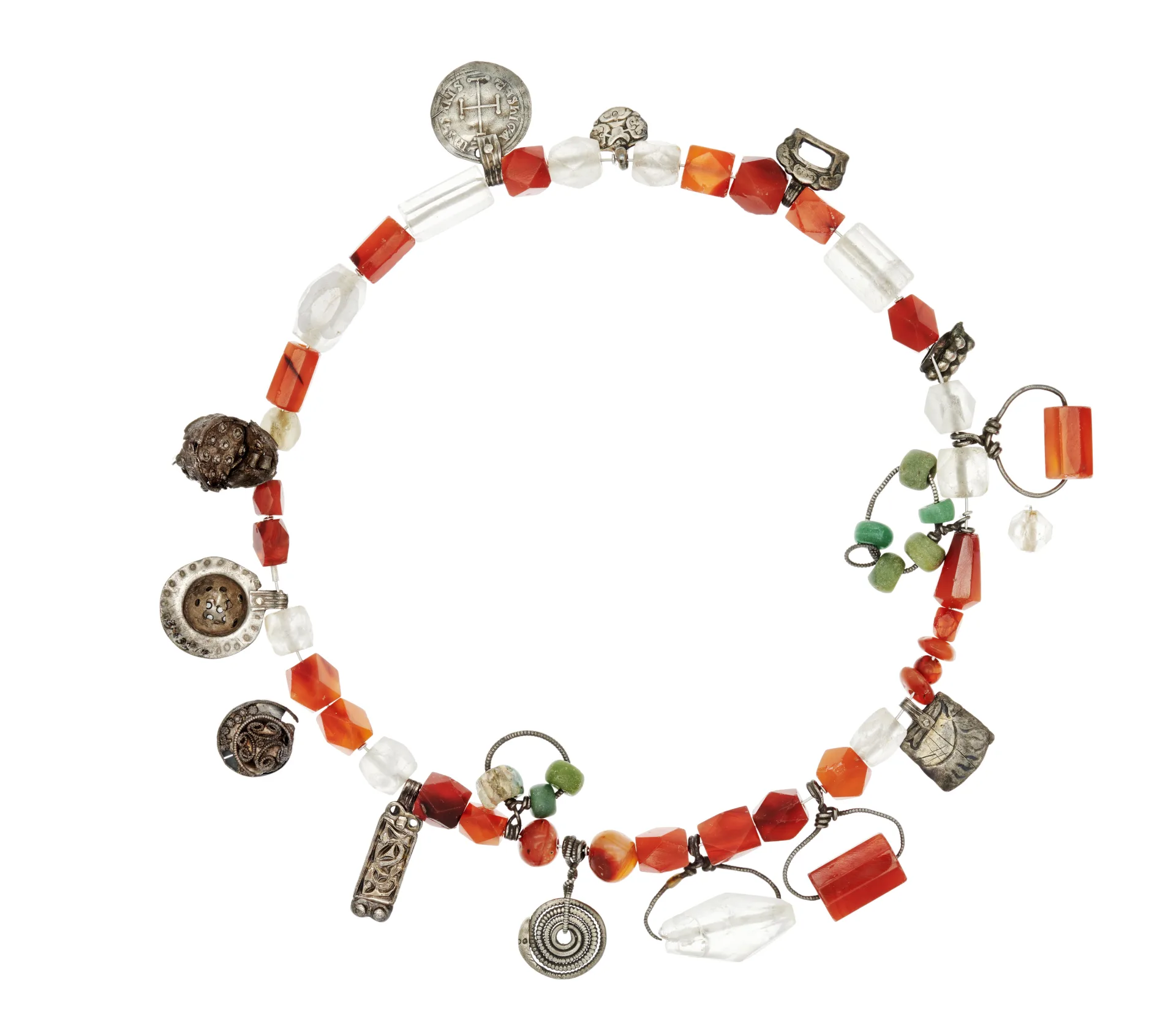
The Protective Necklace
This necklace was found in the 1870s in an 9th-century grave at the former trading site of Birka. The grave where the necklace was discovered is a so-called chamber grave – an underground room with wooden walls that indicate the high status of the woman buried there. The necklace was placed on the woman’s chest.
The necklace’s beads are made of rock crystal and carnelian from the Caucasus. It also contains 15 different pendants. One of them depicts a “kubbstol,” a chair made from a tree trunk. The kubbstol is associated with the practice of divination and could be a sign that the woman was a völva, a seeress.
Where to find it
On display at the Swedish History Museum in the exhibition The Viking World. You can find the object in case 04.
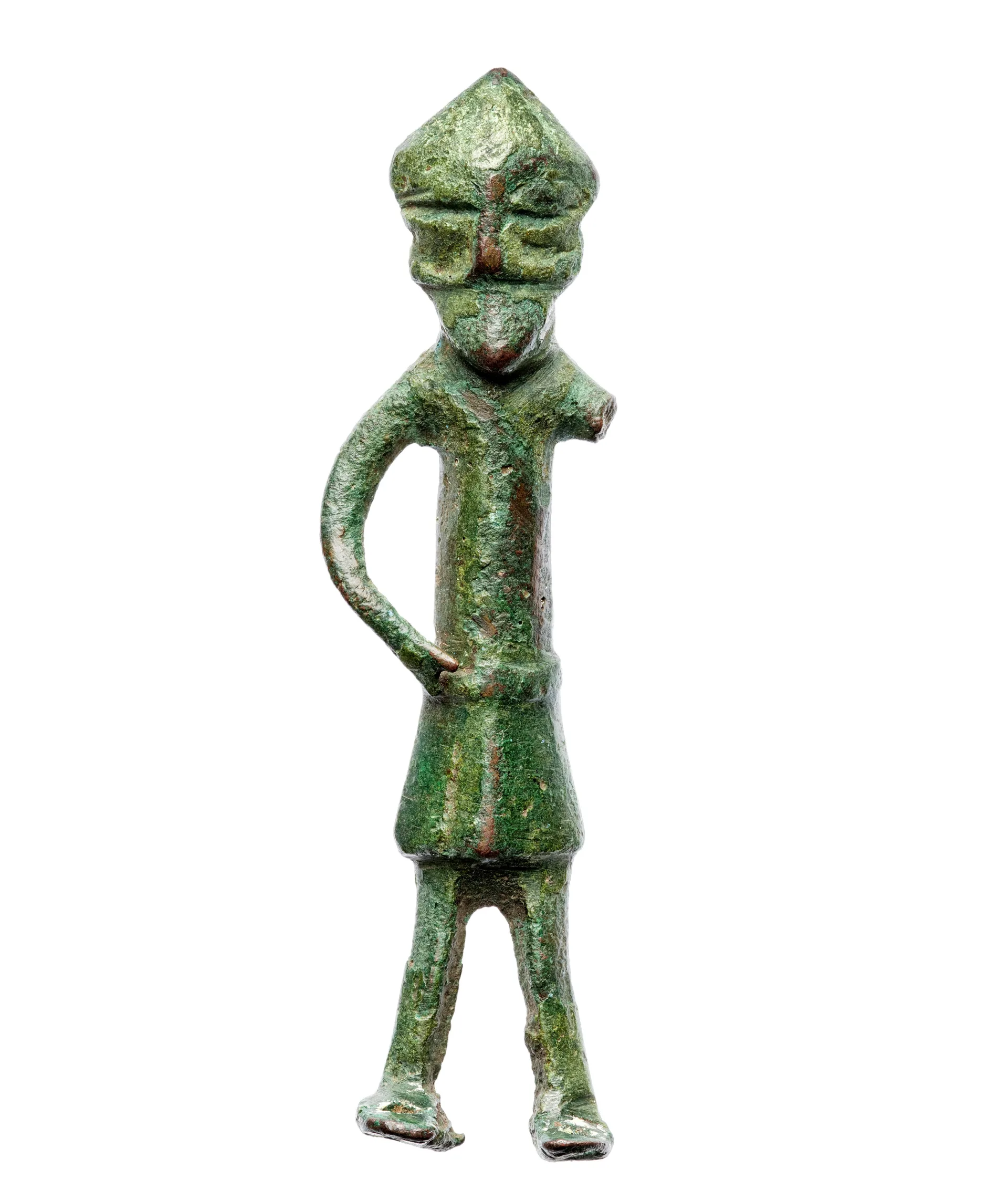
Oden Figurine
This is a cast bronze figure of a man with upward-curving mustaches and a pointed goatee. He wears a pointed headdress, possibly a helmet, a knee-length coat, and a belt around his waist. His right arm is bent toward the waist, while the left arm, due to later damage, is broken at shoulder height. Each foot has a rivet hole, indicating that the statuette was once mounted on a base.
May represent the god Odin
Some believe the figure was intentionally depicted with one eye deformed or damaged, suggesting it represents the Norse god Odin, who sacrificed one eye to drink from the giant Mimir’s well in order to gain supreme wisdom and the ability to see all that happens in the world. Others argue that the “damage” occurred accidentally during casting and that it is not certain the figure represents Odin. Nevertheless, the bronze figure has long been known as the Odin from Lindby.
Where to find it
On display at the Swedish History Museum in the exhibition The Viking World. You can find the object in case 57.
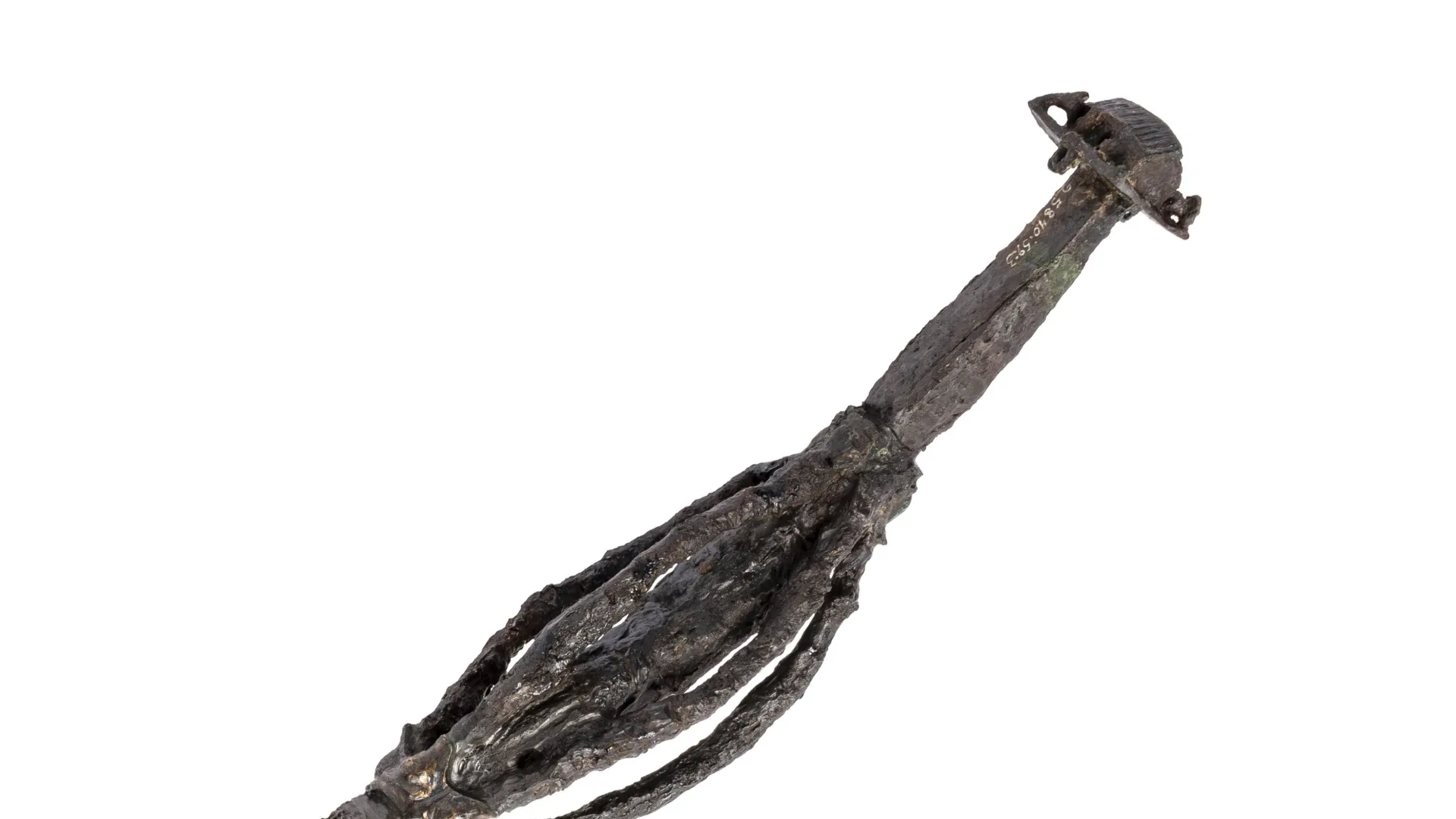
The Klinta staff
The Swedish History Museum’s collections include a handful of staffs. The Klinta Staff is the most elaborately decorated of them. This iron staff has copper and bronze details.
In its discovered condition, the staff is 82 centimetres long. However, the lower part is broken, so the staff was originally longer. It is also bent in a few places. Perhaps intentionally, to dissipate its force before it was placed diagonally in the grave deposit?
Where to find it
On display at the Swedish History Museum in the exhibition The Viking World. You can find the object in case 68.

Söderala weather vane
A gilded bronze weather vane decorated in the Ringerike style. The vane was originally on the church tower of Söderala in Hälsingland and came to the museum in 1917.
The weather vane consists of large and small bronze plates and an animal figure sitting on the top edge of the vane. The holes on the curved underside served as loops for freely hanging leaves, which are now missing.
Where to find it
On display at the Swedish History Museum in the exhibition The Viking World. You can find the object in case 78.
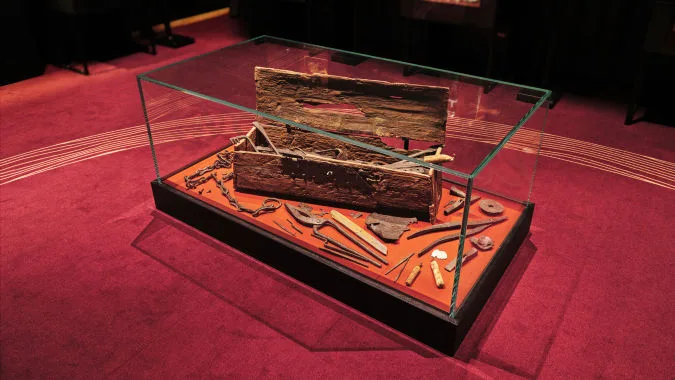
A unique tool chest
This unique tool chest comes from an archeological find in Mästermyr, Silte parish, Gotland. The chest is 90 centimetres long and 30 centimetres high, made of oak with an iron locking mechanism. Despite the violent treatment it endured under a tractor’s plough, it was hardly damaged at all. The lid is slightly arched and made of planks; the chest itself is nailed together from four planks of different lengths with dovetailed corners and an iron locking mechanism.
Where to find it
On display at the Swedish History Museum in the exhibition The Viking World. You can find the object in case 24.
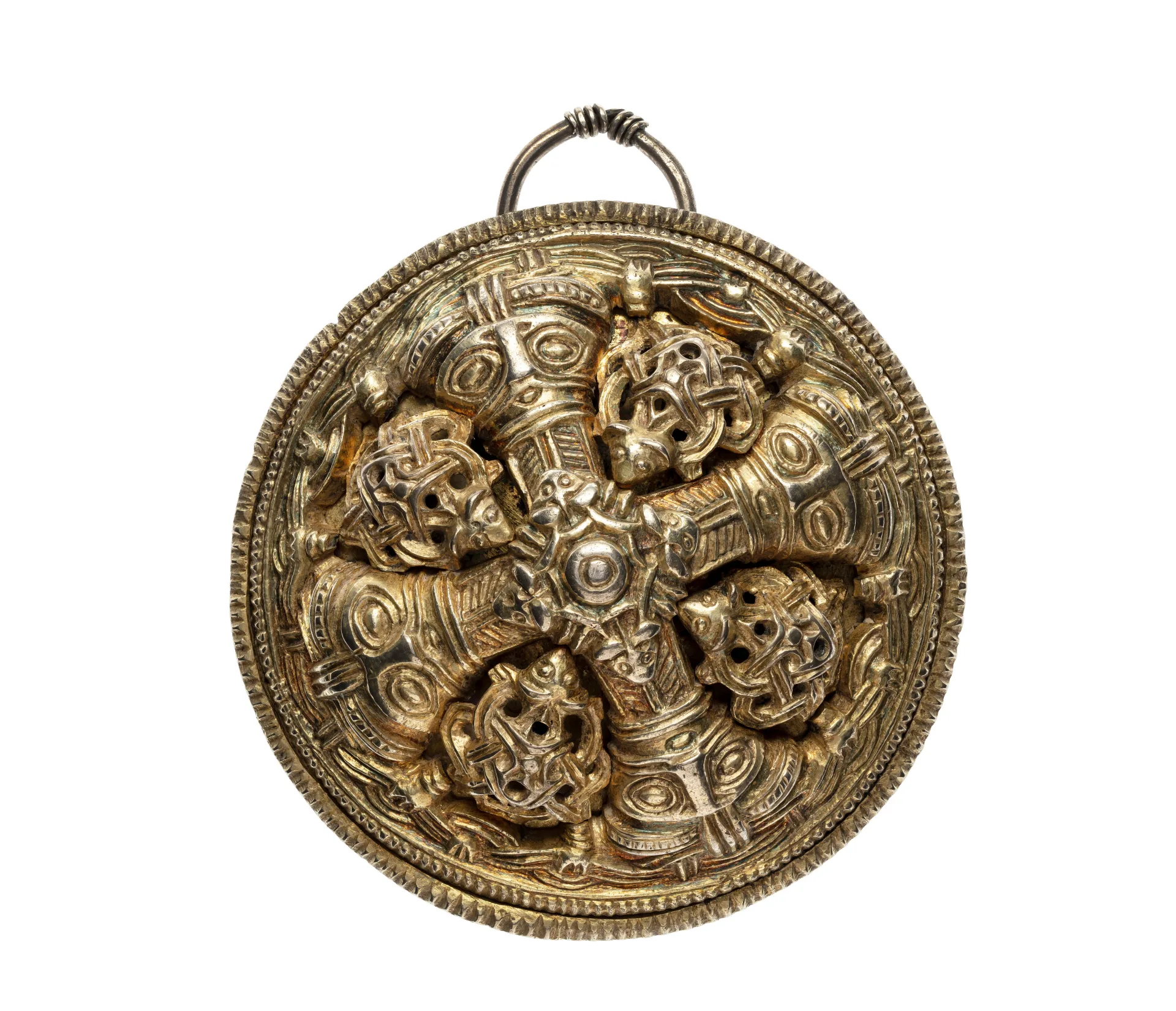
An impressive silver treasure
Don’t miss the impressive Vårby silver hoard. It contains several objects from across the known world at the time, with Scandinavian, Western, Eastern, and West Slavic origins. The hoard reveals much about the Viking Age. Among the gold-tinged objects are both male- and female-coded jewellery and fittings.
Where to find it
On display at the Swedish History Museum in the exhibition The Viking World. You can find the object in case 02.
What to know before your visit
- Admission: Free admission for children and youth aged 0–18. See admission fees for adults.
- Cloakroom: The cloakroom is located on the entrance floor. Here you will find lockers with locks. Small bags are allowed inside the exhibition areas. If you want to store larger suitcases, you can borrow a key at the information desk for the larger lockers in the cloakroom.
- Strollers: You are allowed to bring strollers inside the museum, except in the Gold Room.
Accessibility
We strive to continuously improve our accessibility to make it easy to visit us, both on-site and digitally. There are elevators to all floors, accessible toilets on all three levels, and disabled parking close to the entrance. Guide dogs are welcome.


